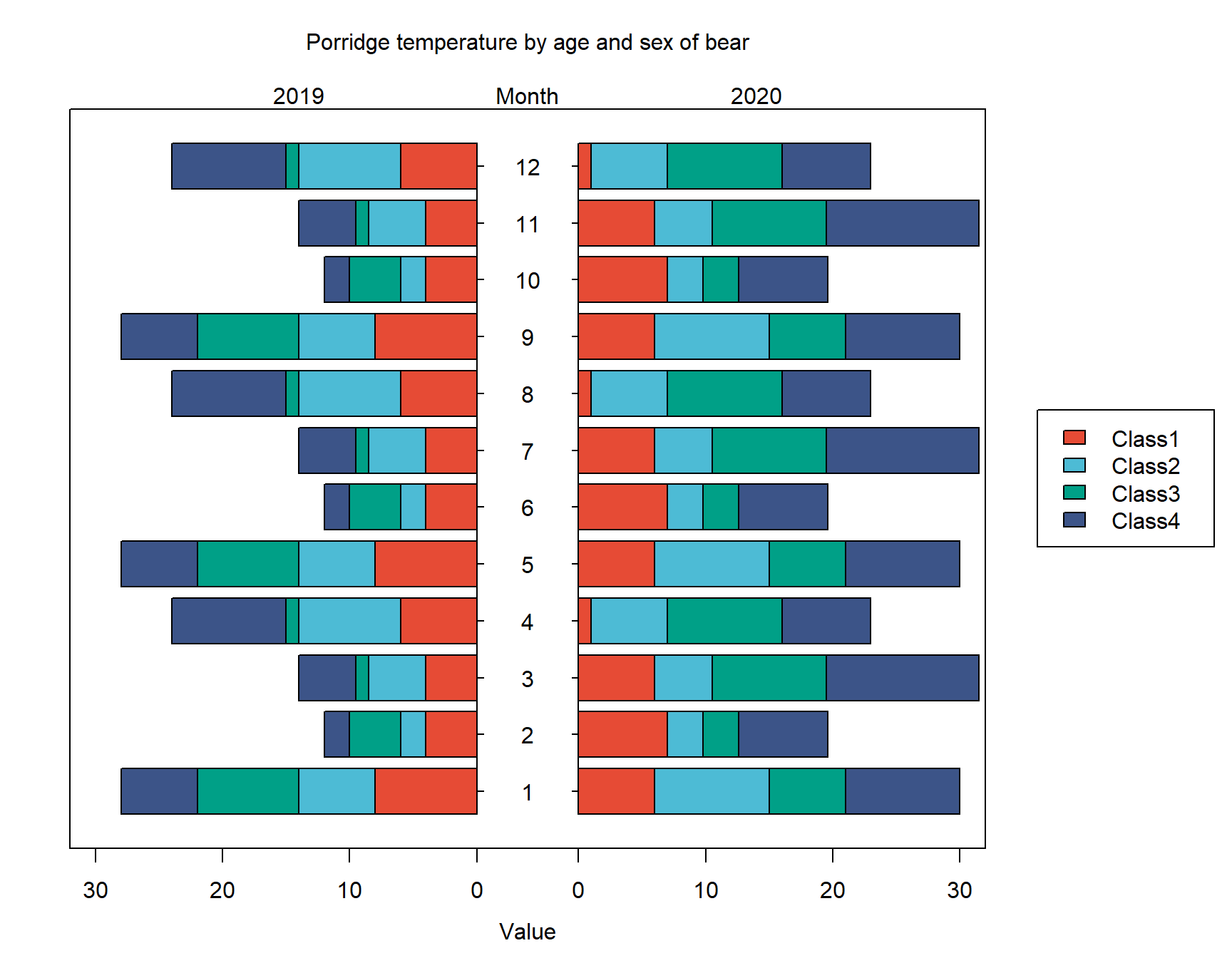# Install packages
if (!requireNamespace("plotrix", quietly = TRUE)) {
install.packages("plotrix")
}
if (!requireNamespace("ggplotify", quietly = TRUE)) {
install.packages("ggplotify")
}
# Load packages
library(plotrix)
library(ggplotify)Pyramid Stack2
Note
Hiplot website
This page is the tutorial for source code version of the Hiplot Pyramid Stack2 plugin. You can also use the Hiplot website to achieve no code ploting. For more information please see the following link:
The pyramid stack is a pyramid-like figure that distributes data on both sides of a central axis.
Setup
System Requirements: Cross-platform (Linux/MacOS/Windows)
Programming language: R
Dependent packages:
plotrix;ggplotify
Data Preparation
# Load data
data <- read.delim("files/Hiplot/147-pyramid-stack2-data.txt", header = T)
# Convert data structure
agegrps <- unique(data[,1])
split_var <- unique(data[,2])
dat_left <- as.matrix(data[data[,2] == split_var[1],-c(1,2)])
dat_right <- as.matrix(data[data[,2] == split_var[2],-c(1,2)])
# View data
head(data) Month Year Class1 Class2 Class3 Class4
1 1 2019 8 6.0 8 6.0
2 2 2019 4 2.0 4 2.0
3 3 2019 4 4.5 1 4.5
4 4 2019 6 8.0 1 9.0
5 5 2019 8 6.0 8 6.0
6 6 2019 4 2.0 4 2.0Visualization
# Pyramid Stack2
p <- as.ggplot(function() {
cols <- c("#E64B35FF","#4DBBD5FF","#00A087FF","#3C5488FF")
names(cols) <- colnames(dat_left)
cols <- cols[1:ncol(dat_left)]
pyramid.plot(dat_left, dat_right, labels = agegrps, unit = "Value",
lxcol = cols, rxcol = cols,
laxlab=as.numeric(c(0,10,20,30)), raxlab=as.numeric(c(0,10,20,30)),
top.labels=c(split_var[1], colnames(data)[1], split_var[2]),
gap=4, ppmar=c(4,2,4,7), do.first="plot_bg(\"#FFFFFF\")")
mtext("Porridge temperature by age and sex of bear", 3, 2, cex=1)
legend("right", inset=c(-0.25,0), legend = colnames(dat_left), fill = cols)
})32 32 p
